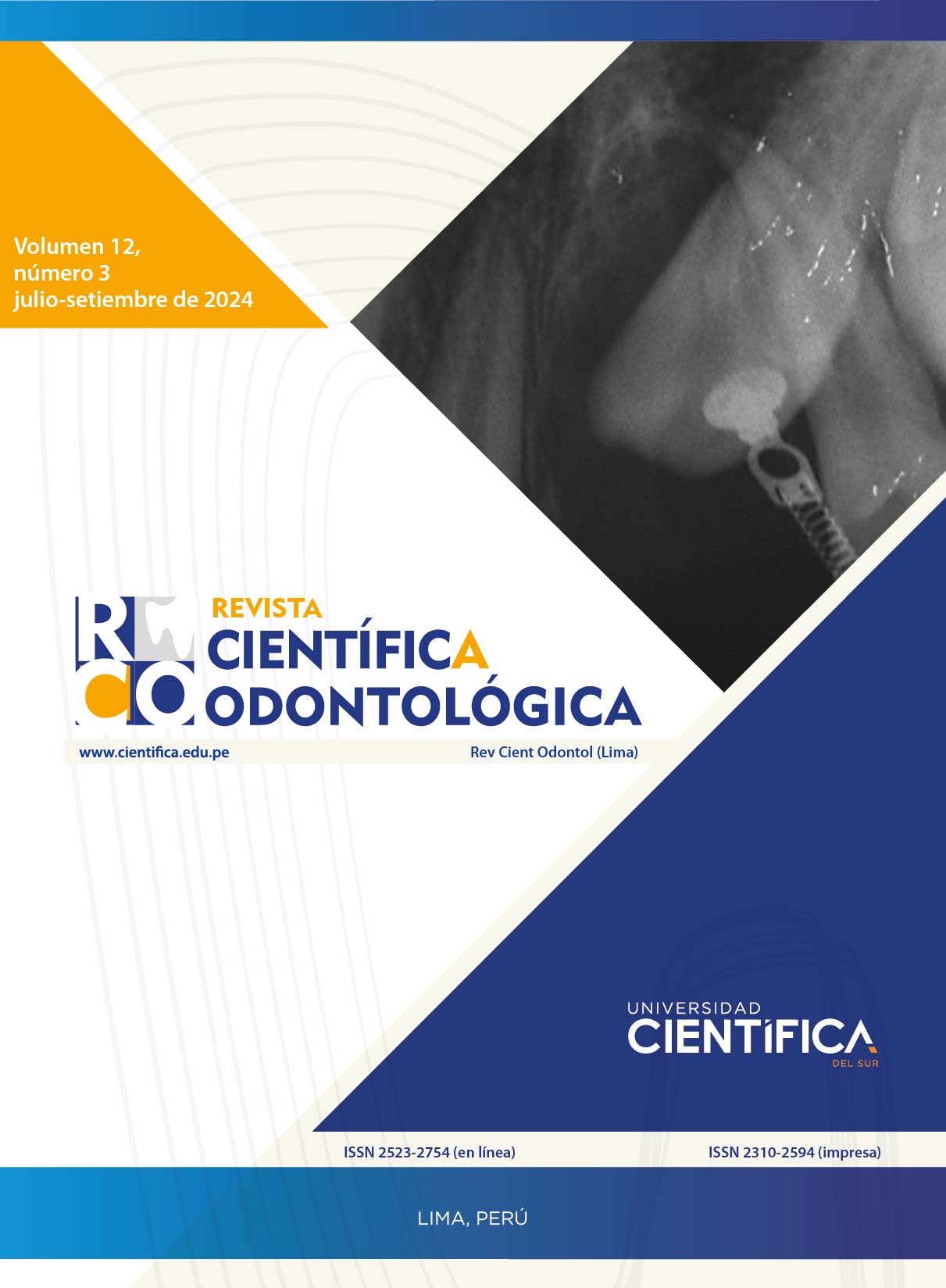Relationship between primate spaces and the shape of dental arches in children from 3 to 6 years old. A cross-sectional study
DOI:
https://doi.org/10.21142/2523-2754-1203-2024-204Keywords:
primate spaces, arch shape, dentition, dental archAbstract
The objective of this study was to determine the relationship between primate spaces and the
dental arches shape in kids from 3 to 6 years of age, from the I.E. Inicial Niño Jesús de Praga in Moyobamba, Peru, during the 2023 school year. Materials and methods: This prospective, traverse, descriptive and observational study was made up of 237 participants, who were examined using a clinical file where the findings were recorded based on, he absence or presence of primate spaces and the shape of the dental arch was classified as oval, square or triangular. A univariate analysis of frequency and percentage, and a bivariate analysis was carried out using chi square, with a significance level of 0.05. Results: It was found that in the upper arch 82.3% presented primate spaces in both quadrants, in the lower arch it was 50.2% followed by 45.6% that showed absence of primate spaces in both quadrants. The most common dental arch shape in both arches was oval (70.5%). 58.6% presented primate spaces in both quadrants and an oval arch shape for the upper arch and 34.6% for the lower arch. A statistically significant relationship was found between primate spaces and dental arch shape in the upper arch (P=0.005), of 4-year-old (P=0.025) and female participants (P=0.002). Conclusion: The presence of primate spaces in both quadrants was predominant for the upper and lower arch, as well as the oval arch shape, with the combination of these characteristics being the most frequent, so the development of its occlusion is expected to be harmonious.
Downloads
Downloads
Published
Issue
Section
License

This work is licensed under a Creative Commons Attribution 4.0 International License.

Este obra está bajo una licencia de Creative Commons Reconocimiento 4.0 Internacional.












